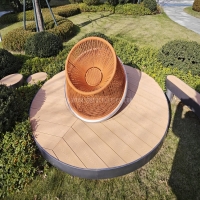Welcome to the website for landscape facilities products and knowledge.
How does the table’s design accommodate the use of tabletop decorations or centerpieces?
A well-designed table serves as both functional furniture and artistic canvas, with specific features that directly impact decoration display. The table's surface material dictates decoration compatibility; non-porous surfaces like glass or sealed wood accommodate fresh flowers with water concerns, while heat-resistant materials suit candle centerpieces. Size proportions determine decoration scale - narrow tables benefit from linear arrangements whereas expansive surfaces can handle substantial centerpieces without obstructing sightlines.
Structural elements significantly influence decoration possibilities. Tables with built-in channels or recessed areas provide secure placement for decorative elements, preventing accidental displacement. Edge details matter substantially; raised borders contain loose decorative materials like sand or pebbles, while beveled edges create visual depth for elevated displays. The table base configuration determines centerpiece positioning - pedestal bases allow centralized focal points while four-legged designs may require asymmetric arrangements.
Height considerations affect both visibility and functionality. Standard 28-30 inch heights maintain sightlines across tables, while counter-height surfaces may require taller arrangements for visual impact. Many contemporary designs incorporate subtle features like centralized cutouts for flower frogs or integrated lighting elements that enhance decorative displays. The relationship between table design and decorations extends beyond aesthetics to practical considerations like stability, cleanability, and proportional harmony, creating environments where decorative elements and furniture function as unified compositions.
Related search:

Recommendation
Swivel chair-Specialty steel structure woven rattan leisure chair with rotatable design